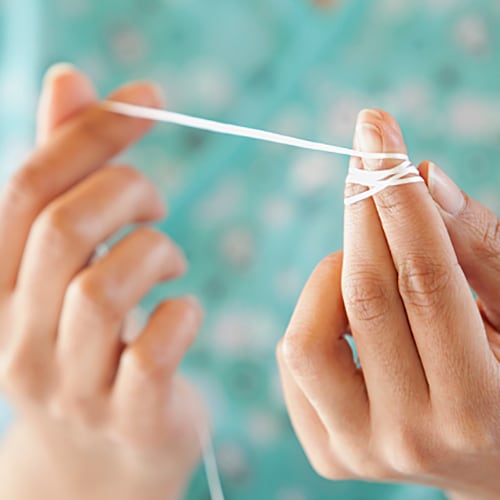Flossing is everyone's favorite thing to do, right? As much as you advise it, you can tell when your patients aren't flossing. For dental hygienists, it can be so frustrating when you realize your patient isn't flossing.
While you do your best to convince your patients flossing is easy, some will inevitably find it complicated. And that's OK. Sometimes you'll also hear "my fingers are too big," "flossing makes my gums bleed," "my teeth are too crowded" or "the floss gets stuck."
How Do People Learn?
One thing that's helpful is to determine how your patient learns. The Journal of American Science reports that adults learn in three ways and also show a preference for one of these:
- Auditory learning
- Visual learning
- Tactile learning.
Anytime someone does something new it's a change to his/her normal routine and may feel awkward. If you can help your patients floss more easily and comfortably, they may be more likely to stick with it.
There are numerous easy ways to floss, but often there's no easy way for patients to discover them.
How to Add Flossing/Interdental Cleaning to a Daily Routine
Admittedly, flossing is challenging, as is changing your eating habits. Creating a routine so that it feels like normal behavior helps. To this end, here are a few easy ways to floss and help your patients pick it up as well as a couple of alternatives:
- Floss at the same time every day. It doesn't have to be in the morning; evening flossing can make for an easier habit since there's less of a time constraint. Leave the floss on the coffee table, nightstand or by the coffee pot as a reminder. Perhaps keep floss in the car, as well, but no flossing and driving at the same time.
- Try flavored floss such as cinnamon or mint, which can help freshen breath at the same time.
- Use both middle fingers to wrap the floss and use the proper technique; if you use your index fingers, sometimes they end up too close to the lips to move the floss effectively.
- Recommend floss picks, interdental brushes or sticks as an alternative.
Wax or No Wax
Unwaxed floss grabs on to plaque more easily than waxed floss, while waxed floss is easier to use but is generally thicker so patients may be apprehensive about pushing it through contact points between teeth. Teflon floss is mainstream and a popular floss because it does slip easily in between tight contacts.
Empower your patients to explore their options, and help them find out what works best for them.
Takeaways
- Ask about your patients' current flossing habits.
- Make recommendations based on how they learn.
- Discuss what might work best for an individual patient.
Why It's Valuable
You're the healthcare professional that your patients listen to when they come in for their hygiene visits. Flossing may be a chore, but you have the opportunity to help change that and make a difference for your patients.


Was this article helpful?
If you’d like a response, Contact Us.